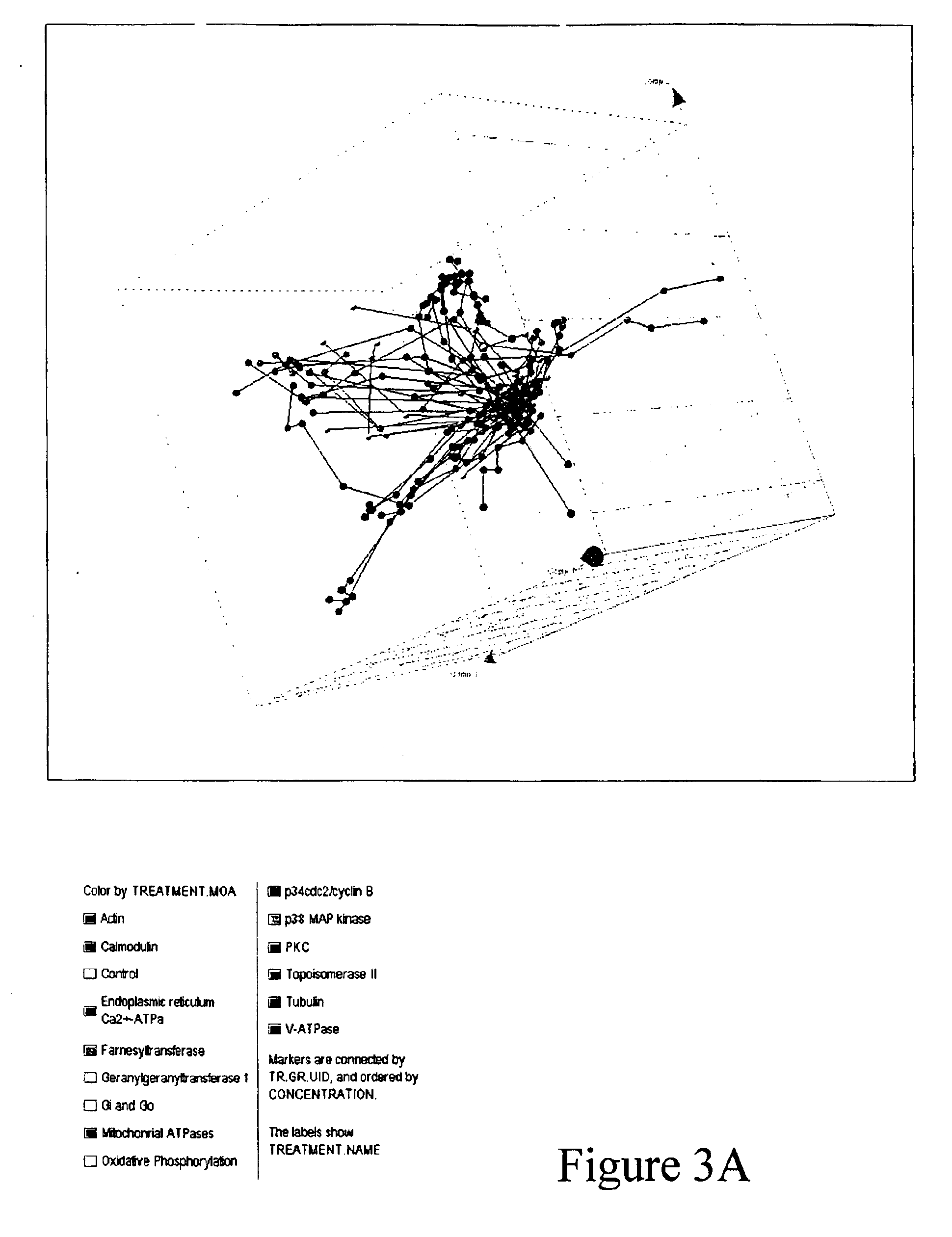Characterizing biological stimuli by response curves
a biological stimuli and response curve technology, applied in the field of biological cell response curves and response curves, can solve the problems of rare and often difficult to identify purified substances having desirable combination bioactive properties, and the vast majority of “hits” generated by such techniques do not possess the right combination of properties to qualify as therapeutic compounds, and are typically found to fail in some regard
- Summary
- Abstract
- Description
- Claims
- Application Information
AI Technical Summary
Problems solved by technology
Method used
Image
Examples
examples
[0118]As indicated above, an underlying premise of this invention is that changes in cell physiology are detectable through single-cell image analysis of cellular markers and, by measuring such changes in a sophisticated fashion, one can monitor biological similarities and differences between compounds. To characterize and demonstrate the ability of multivariate quantitative phenotype response paths to distinguish different classes of molecules, a panel of commercially available compounds with broad mechanisms of action was tested using the present invention. The types of compounds tested are listed in the following table.
[0119]
Number ofClassPrimary Protein TargetCompoundsCalciumEndoplasmic reticulum3Ca2+ − ATPaseCalciumCalmodulin6CytoskeletonActin8CytoskeletonTubulin9G Protein EffectorsG-proteins Gi and Go4Gene RegulationTopoisomerase II6Ion PumpV-ATPase2Oxidative PhosphorylationMitochondrial ATPases3PosttranslationalFarnesyltransferase2ModificationPosttranslationalGeranylgeranyltr...
PUM
| Property | Measurement | Unit |
|---|---|---|
| electrical | aaaaa | aaaaa |
| magnetic | aaaaa | aaaaa |
| mechanical | aaaaa | aaaaa |
Abstract
Description
Claims
Application Information
 Login to view more
Login to view more - R&D Engineer
- R&D Manager
- IP Professional
- Industry Leading Data Capabilities
- Powerful AI technology
- Patent DNA Extraction
Browse by: Latest US Patents, China's latest patents, Technical Efficacy Thesaurus, Application Domain, Technology Topic.
© 2024 PatSnap. All rights reserved.Legal|Privacy policy|Modern Slavery Act Transparency Statement|Sitemap



